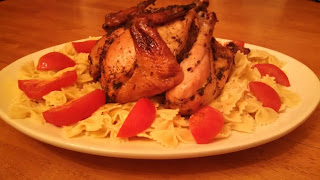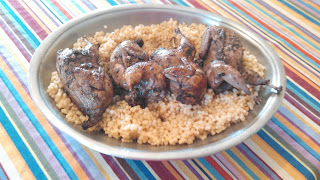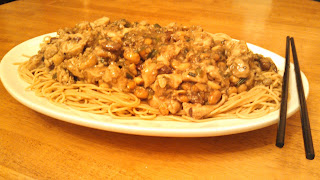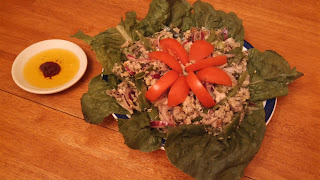 Summertime is salad time, we all know that. The problem has always been salad dressings. Back on the block, when I was coming up, there was no such thing as exclusive salad dressings. It was just plain ole olive oil and vinegar drizzled over the greens. Even in Spanish Harlem in the 50s and 60s this was the norm. Then, like everybody else, we started getting into the fancy individualized dressings: Russian, French, Ranch-Style, 1,000 Island, etc. But, you know what?—in my family it was still the old standby of oil and vinegar.
Summertime is salad time, we all know that. The problem has always been salad dressings. Back on the block, when I was coming up, there was no such thing as exclusive salad dressings. It was just plain ole olive oil and vinegar drizzled over the greens. Even in Spanish Harlem in the 50s and 60s this was the norm. Then, like everybody else, we started getting into the fancy individualized dressings: Russian, French, Ranch-Style, 1,000 Island, etc. But, you know what?—in my family it was still the old standby of oil and vinegar.
Now, I know times have changed, and even an old dinosaur like me recognizes that. Still, to me, salad dressings are a goof. Go to the supermarket and you are inundated by every type and blend— everything from the regulars, like Italian, Blue Cheese, Caesar, to Raspberry Walnut, Chipotle Ranch, Guacamole Ranch, Ginger-Mandarin, Lime-Basil, Sun-Dried Tomato, Santa Fe Blend, and specialty premium types like Champagne Dressing and something called “Goddess” Dressing. All well and good. However, most are loaded with chemicals and ersatz ingredients. I discovered long ago that you can make fine dressings at home, and usually with stuff already in your cupboard. I stopped buying the fancy-dan specimens a while back. Plain, good ingredients, and in a few moments of your time you have best, nutritious and delicious backdrop to any salad.
Below are given five of my favorites. Why spend money on pseudo stuff, when you can whip up the genuine article?
BASIC DRESSING
Combine in a small bowl or cruet: 3 tablespoons olive oil, 2 tablespoons vinegar (distilled white, cider or red wine), 1/2 teaspoon mustard (dry or prepared), salt and pepper to tatse. Blend with a fork or small whisk. Stir in 1 teaspoon of crumbled herbs (basil or thyme, or oregano, or parsley, or dill). Place in refrigerator until ready to use.
SESAME DRESSING
In a small bowl, whisk together 1 tablespoon sesame oil, 2 tablespoons vinegar (distille white or red wine). Stir in 2 small thinly sliced scallions, and season with pepper to taste. This is normally used over steamed vegetables or fish.
CREAMY SALAD DRESSING
Combine until smooth in a blender or food processor, 1 medium peeled cucumber, 1 scallion, 2 tablespoons fresh mint, 1 tablespoon lemon juice, and 1 tablespoon sesame tahini.
YOGURT-DILL DRESSING
Combine until smooth in a blender of food processor: 1 cup yogurt, 2 tablespoons fresh dillweed, 1 tablespoon lemon juice, 1/2 small yellow onion or 1 scallion. Chill and serve over cooked vegetables or fish.
TOMATO-TAHINI DRESSING
Stir together in a small bowl until well blended: 3/4 cup yogurt, 1 tablespoon sesame tahini, 1 tablespoon tomato paste, 1 teaspoon soy sauce, 1 teaspoon white vinegar. Serve chilled over toss salad or in tuna, macaroni or chicken salad.
Following in this vein, some friends have asked me how to infuse or flavor olive oil. You know what I mean: you go into a fancy store and you see bottles of olive oil with all kinds of things growing in them. You can have the same affect at home for 1/3 of the cost.
FRESH-HERB DRESSING
Wash and dry a large bunch of fresh herbs (such as basil, cilantro, tarragon, dill, etc.) Fill a bottle with half of the leaves, and then fill with olive oil. For more flavor, you can add some whole peppercorns, 1 clove garlic (smashed), and (if you’re really adventurous) one red or green hot pickled pepper (or 1 chili pepper). Cover and store in the fridge for 1-2 weeks. For a stronger flavor, remove the basil leaves and replace with more leaves. Cover and steep for another week. Strain the oil









